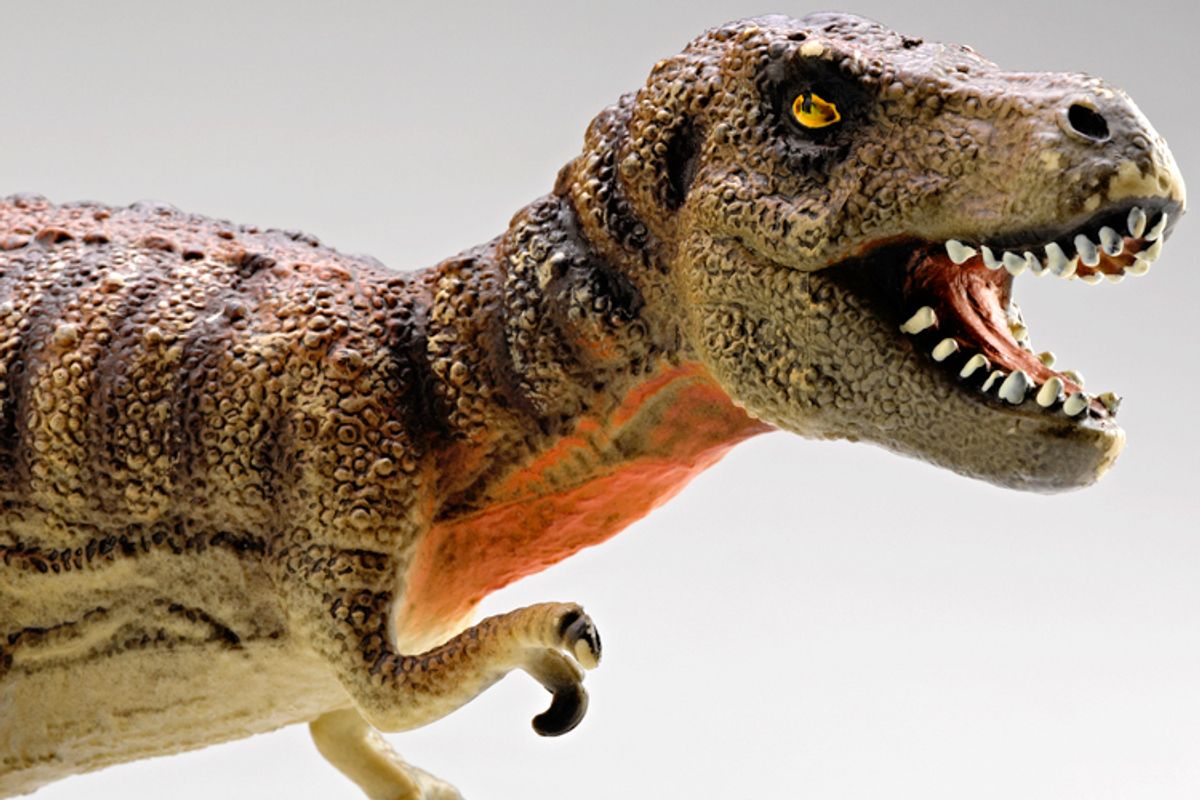The skeleton of a new type of tyrannosaur was discovered in a Chinese construction site, near Ganzhou in the south. The 66-million-year-old predator was identified by scientists at Edinburgh University in the U.K., and officially named Qianzhousaurus sinensis. However, scientists have nicknamed the ancient colossal reptile "Pinocchio Rex," due to its very long nose. The find was published in the journal Nature Communications.
"Pinocchio" is a cousin of the famously ferocious predator, Tyrannosaurus rex. "It has the familiar toothy grin of T. rex, but its snout was long and slender, with a row of horns on top," Dr. Steve Brusatte of Edinburgh told BBC.
BBC reported that Qianzhousaurus was around 29.5 feet tall, the same distance in length, and could have weight nearly a ton. Despite being much smaller than other tyrannosaurs, it was still a fearsome carnivore. According to BBC:
"Researchers now think several different tyrannosaurs lived and hunted alongside each other in Asia during the late Cretaceous Period, the last days of the dinosaurs."
The discovery of this T. rex cousin helped end a scientific squabble. Several strange fossils were found, but scientists were unsure if they were an entirely new branch of the tyrannosaurs family.
The previous fossils, found in Mongolia, also had lengthy, horned noses and were named Alioramus. The trouble with the find was that the fossils were of juveniles, and scientists couldn't be sure that the elongated snout wasn't a trait that would be outgrown in adulthood. "Pinocchio" is nearly a full grown dinosaur.
Dr. Brusatte said to BBC, "This is the slam dunk we needed: the long-snouted tyrannosaurs were real."
A co-author of the paper, Professor Junchang Lu of the Chinese Academy of Geological Sciences, also thinks that these smaller tyrannosauruses were widely distributed across Asia.
But where one mystery is solved another is posed: Why is Qianzhousaurus's nose 35 percent longer than other dinosaurs of its size? Scientists still don't know.
What they do know is that it was smaller than the T. rex, lighter, possibly more nimble and less muscular. The next step is to do biomechanical studies of "Pinocchio's" jaw, figure out its eating habits, and hopefully learn more about the cousin of the T. rex.
h/t BBC



Shares